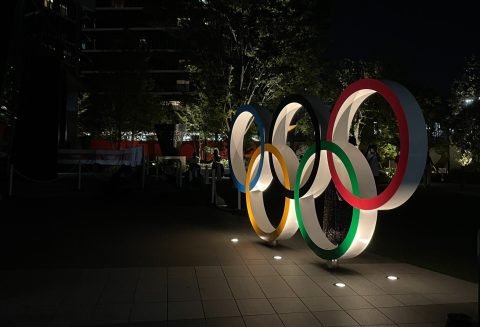The Refugee Olympic Team sets an example of what UK refugee policy could look like
Written by: Igor Prato Luna

As the UK government rushes to pass its new Nationality and Borders Bill (which includes measures to penalise certain entry routes to the UK in breach of the 1951 Refugee Convention), refugees and asylum seekers are pushed further to the margins of British society. By keeping migrants and asylum seekers physically as far removed from the public as possible, the government’s hope seems to be that the migrants might actually disappear, or at least that the Home Office will receive less attention when the system fails, asylum seekers’ waiting times soar, their living circumstances worsen, and their death tolls rise. Off-shore detention centres for asylum seekers awaiting a decision, another one of Ms. Patel’s proposals, are meant to complete that mission of pushing migrants out of sight and out of mind to let the Home Office do its business uninterrupted.
But refugees refuse to go into hiding, to make themselves invisible. At the 2020 summer Olympics, Yusra Mardini, who fled Syria in 2015 after her house was destroyed, was shining as she walked down the opening ceremony carrying the Olympic flag, representing not her own nation but the Olympics themselves as part of the Refugee Olympic Team.
The Refugee Olympic Team was created by the IOC for the 2016 Olympics, to include athletes in competition after having been forced to leave their home countries due to circumstances beyond their control. In 2016, the team comprised of 10 athletes. This summer, it has 29 representatives in Tokyo. These 29 athletes represent a population of 20.7 million refugees and 82m displaced people across the world: their struggles, their stories and their place in their adopted home countries after being forcefully displaced, often thousands of miles away from home.
Mardini is a symbol of hope for all of them. She and her sister left Damascus in August 2015. Once they arrived in Turkey, they embarked on the dangerous journey to Greece in an overcrowded inflatable lifeboat. When the boat started taking on water, they were forced to stay afloat swimming for hours on end before the boat started working again, and they were able to continue their journey to Lesbos. From Lesbos, they walked through Europe until they reached Germany, where Mardini now lives and trains for her swimming races. In 2016, she became the first Refugee Athlete to participate in the Olympics, using the same swimming skills which saved her life a year prior to swim the 100 metres freestyle and the 100 metres butterfly at the Rio Olympic Games.
The Refugee Olympic Team is ground-breaking for many reasons. It disrupts the traditional patriotic nationalist make-up of the Olympics, allowing for an independent team of different nationalities to participate under the same flag whilst representing a diverse, multinational population of refugees across the world. This sends an encouraging message; in sports, everyone can compete. There is no difference to be made based on where you are from or how you got there. It also shows a sign of solidarity and hope for refugees and those forced to leave their home, giving them role models who have been through similar experiences, pushing the boundaries of what they can imagine to one day achieve.
Yusra Mardini and her co-athletes represent the potential and possibility of a society where refugees are included and empowered to be a part of their adopted homes. It shows how they can transcend their traumatic past and boasts of the potential they can fulfil if given the opportunity to do so. Such initiatives could be mirrored at a national level. Shamefully, that is not the case in individual states like the UK, where hostile environment policies and increasingly harsher measures against asylum seekers slim their chances for a fulfilled life and contribution in British society.
Categories: AsylumHuman Rights
